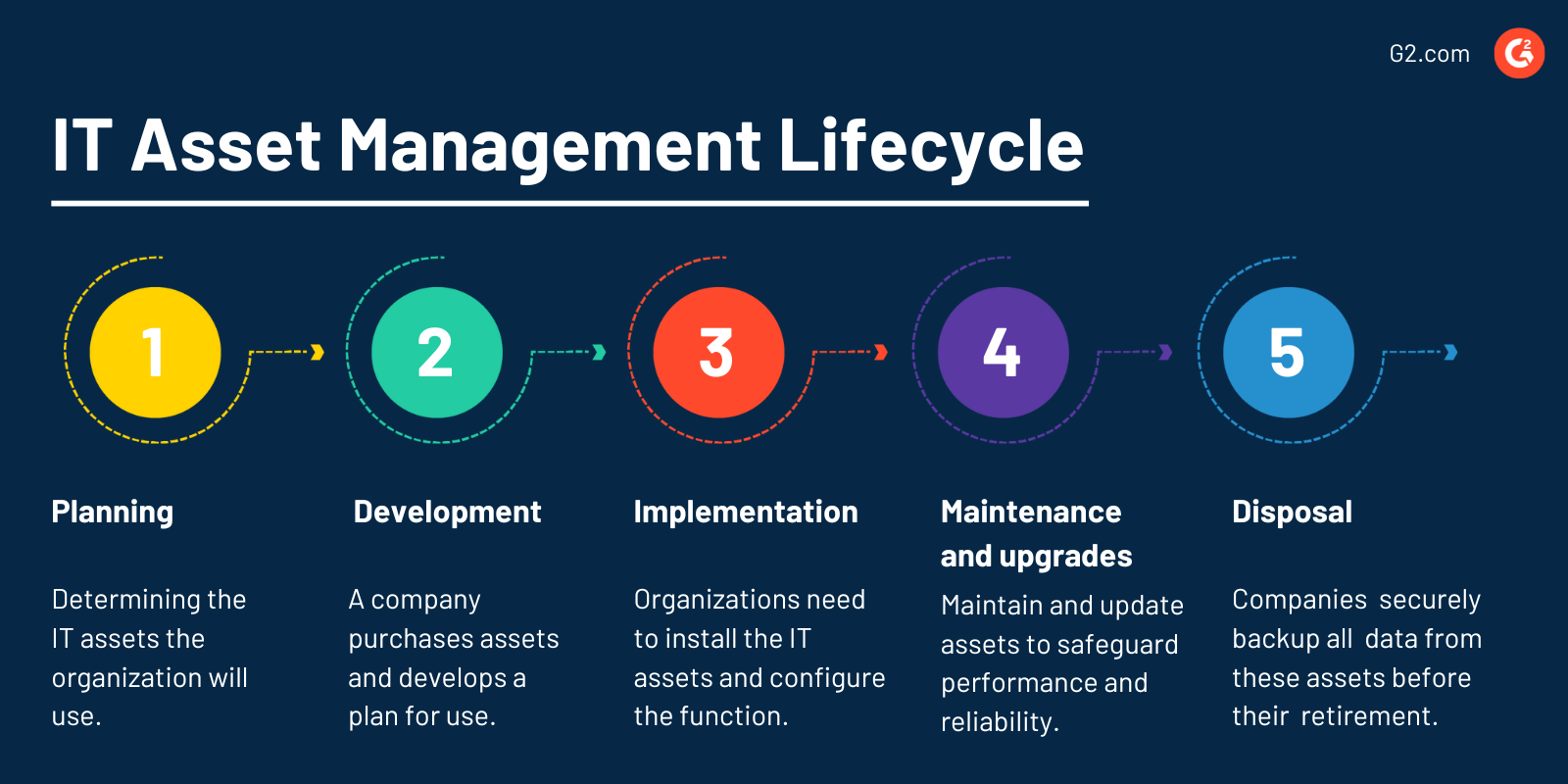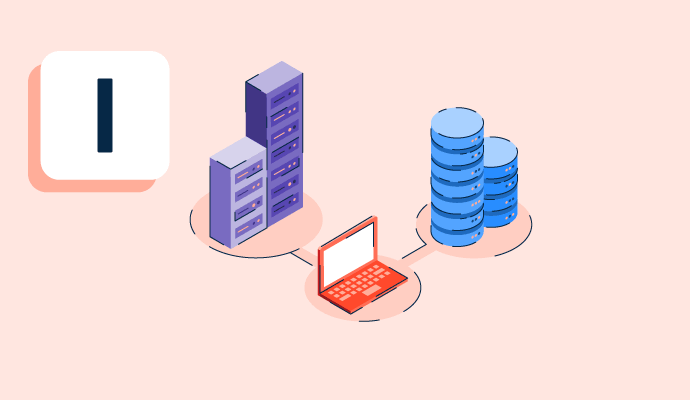What is IT asset management?
IT asset management (ITAM) is an operational process of end-to-end management of IT assets that includes acquiring, tracking, indexing, maintaining, and disposing. ITAM integrates financial, inventory, and contractual tasks to reduce costs, assist IT environment lifecycle management, and facilitate strategic decision making in business.
Information technology (IT) assets are any data, software, or hardware a business uses for its operations. Hardware assets include tangible computing gear, including desktop computers, laptops, mobile devices, actual servers in data centers, keyboards, and printers. In short, companies must take care of these assets in ITAM.
For instance, keeping track of all the desktops and their warranties might assist organizations with budgeting, replacement planning, and support. They can also track their expiry dates by keeping their software licenses in a database. Many organizations prefer using IT asset management software to document their software and hardware inventory.
Types of IT asset management
Below are the types of ITAM techniques that support businesses to manage their IT assets.
- Digital asset management. Organizations that handle digital content often employ asset management tools to track licensing, formats, metadata, and other factors. These tools additionally offer functions and features that are hard to find in other products.
- Fixed asset management. The tools keep track of all fixed IT assets on the premises, including workstations, printers, networking cabinets, server room AC units, and other items.
- Hardware and software asset management. In this approach, IT has a platform that exclusively emphasizes managing IT hardware, including endpoint devices, mobile devices, servers, workstations, and any software in use.
- Cloud asset management. An instrument for managing cloud assets from Amazon, Microsoft, Google, or other cloud service providers is called a cloud asset management tool.
- Network asset management. This technique helps companies manage network infrastructure like routers, firewalls, wireless access points, and switches.
Benefits of IT asset management
Benefits of ITAM include improved management and operations, cost savings, increased security, and better planning. Here are some additional advantages of ITAM.
- Single asset database. Monitoring assets in multiple locations is difficult as inaccuracy and mismanagement may occur. Hence, companies can easily track assets to prevent inefficiency and poor decision making. They can see everything in one place and decide what to do with the assets.
- Better asset use. IT asset management minimizes waste, risk, and costs while promoting effective resource utilization. An organization can acquire real-time information on the condition of all assets. After that, they can utilize that information to make informed decisions about asset use by implementing an ITAM process.
- Improved asset classification. With the help of ITAM, organizations can categorize IT assets according to their characteristics. The factors include their roles, departments, physical locations, owners, and other attributes. By improving asset management, utilization, and tracking, businesses can better assess risk, allocate assets, and plan for retirement.
- Compliance with software licenses. Software providers seek proof that the organization complies with all the license rules. Companies use ITAM software to continuously track that all software installed on their systems complies with all applicable license agreements.
- Informed decision-making. IT asset management data helps assess the prior deployments and purchases and guides subsequent moves. ITAM can enhance business and purchasing procedures through efficient decision-making for IT assets.
IT asset management lifecycle
The ITAM lifecycle starts from choosing hardware and software assets to the end of use and disposal.

Here are the five stages:
- Planning. It involves planning out or determining the IT assets the organization will use. It must fulfill the ITAM goals and objectives.
- Development and acquisition. In the second stage, the company purchases assets and develops a plan for using different techniques. They establish the asset's ownership and accountability. Also, the organization can acquire assets by purchasing, licensing, or leasing.
- Implementation. At this point, organizations need to install the IT assets and configure the function. Then, the company can meet its goals securely.
- Maintenance and upgrades. This stage subsequently involves regularly maintaining and updating IT assets to safeguard optimal performance, reliability, and security.
- End of use and disposal. Disposing of IT assets, no longer in use is the last stage of the ITAM lifecycle. Companies must securely backup all the data from these assets before the asset's retirement.
IT asset management process
The ITAM process involves the three following steps:
- Asset identification. Making a complete inventory of all IT assets is the first step in ITAM. Companies quickly identify redundant assets and optimize them for maximum productivity.
- Asset tracking. An ITAM tool is used to track IT assets regularly. Financial (asset costs), contractual (warranties, licenses, and service-level agreements), and inventory (location and condition of physical assets) data are all collected for each asset.
- Asset maintenance. Maintaining IT assets following the stage of their lifecycle is an essential part of the ITAM process. Maintenance involves the repair, improvement, and replacement of assets.
IT asset management best practices
ITEM significantly involves the best practices organizations can follow for successful implementation. The best practices are:
- Identify the necessary asset. Identify the tool that would meet the present asset management needs.
- Usability plan. Outline the system's use, documentation, and standard operating procedures for asset tracking.
- Tracking strategy. Developing a uniform tracking strategy indeed ensures the accountancy of all relevant assets.
- Regular audits. Execute regular audits of asset management by inspecting and revamping current assets.
- Monitoring data. Track critical data such as expiry dates, purchase dates, vendor contact details, etc.
IT asset management vs. IT service management
IT asset management (ITAM) tracks, manages, and optimizes a company's IT assets efficiently. It maximizes asset utilization, minimizes costs, and improves decision-making with complete asset lifecycle management.
IT service management (ITSM) helps businesses streamline their IT service delivery and support processes effectively. They align IT services with business needs, automate service workflows, and prioritize and resolve incidents and service requests. In this process, they improve service quality, enhance customer satisfaction, and optimize IT operations with robust ITSM features.
ITAM and ITSM are complementary to each other.
Learn more about ITSM and discover how it enables more efficient, standardized, and effective IT service delivery.

Sagar Joshi
Sagar Joshi is a former content marketing specialist at G2 in India. He is an engineer with a keen interest in data analytics and cybersecurity. He writes about topics related to them. You can find him reading books, learning a new language, or playing pool in his free time.

